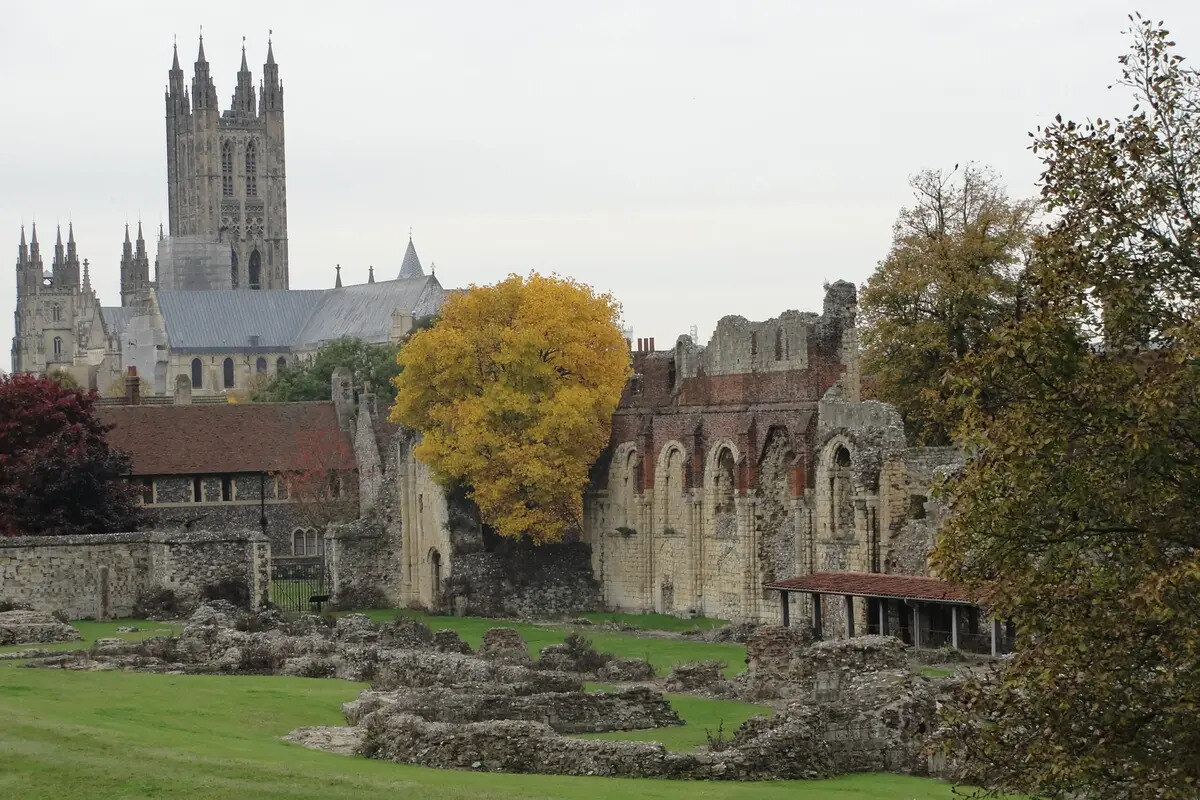
Saint Augustine’s Abbey, located in Canterbury, is a site rich in history, tradition, and spirituality. This iconic landmark is not only renowned for its architectural splendor, but also for its significant contributions to Christianity and British heritage. Founded in the 6th century by Saint Augustine himself, the abbey served as a center of religious worship and learning for centuries.
Today, Saint Augustine’s Abbey stands as a captivating testament to a bygone era and offers visitors a glimpse into the lives of those who lived within its hallowed walls. From its stunning medieval ruins to its beautifully preserved artifacts, the abbey holds numerous secrets waiting to be discovered. In this article, we will explore 13 fascinating facts about Saint Augustine’s Abbey, shedding light on its importance and the stories it has to tell.
Key Takeaways:
- Saint Augustine’s Abbey in Canterbury has a rich history dating back to the 6th century, playing a key role in spreading Christianity and serving as a burial place for kings.
- The abbey, designated as a UNESCO World Heritage Site, features magnificent architecture, beautiful gardens, and hosts cultural events, making it a captivating destination for visitors.
Ancient Origins
The history of Saint Augustine’s Abbey in Canterbury dates back to the 6th century when it was founded by Saint Augustine himself.
Important Religious Center
Over the centuries, the Abbey became a significant religious center and played a key role in the spread of Christianity in England.
UNESCO World Heritage Site
In 1988, Saint Augustine’s Abbey, along with Canterbury Cathedral and St Martin’s Church, was designated as a UNESCO World Heritage Site, representing outstanding universal value.
Magnificent Architecture
The abbey features breathtaking architectural elements, including the ruins of the Norman church and the remarkable remains of the Great Cloister.
Burial Place of Kings
Several kings of Kent, including King Ethelbert, King Eadbald, and King Eormenred, were buried within the grounds of the abbey.
Literary Connections
The famed poet Geoffrey Chaucer, known for “The Canterbury Tales,” was once a tenant of Saint Augustine’s Abbey.
Destruction and Dissolution
During the dissolution of the monasteries in the 16th century, King Henry VIII ordered the abbey’s dissolution, leading to its eventual destruction.
Reconstruction Efforts
In recent years, the remains of Saint Augustine’s Abbey have undergone extensive conservation and reconstruction to preserve its historical significance.
Inspirational Gardens
The abbey’s grounds feature beautiful gardens that have been designed to evoke a sense of peace and tranquility.
Pilgrimage Destination
Saint Augustine’s Abbey has been a popular pilgrimage destination for centuries, attracting visitors from all around the world.
Educational Center
Today, the abbey serves as an educational center, offering visitors the opportunity to learn about its rich history and cultural significance.
Cultural Events
The abbey hosts various cultural events throughout the year, including music concerts, theater performances, and historical reenactments.
Inspiring Ruins
The ruins of Saint Augustine’s Abbey stand as a testament to its former grandeur, captivating visitors with its mystique and historical allure.
Conclusion
In conclusion, Saint Augustine’s Abbey in Canterbury is a fascinating landmark with a rich history and significant cultural significance. From its origins as a Benedictine monastery to its current state as a UNESCO World Heritage Site, the abbey has stood the test of time and offers visitors a glimpse into the past. The impressive ruins, serene gardens, and informative displays make it a must-visit destination for history buffs and architecture enthusiasts alike. Whether you’re exploring the ancient ruins, learning about the abbey’s role in English history, or simply taking in the beautiful surroundings, a visit to Saint Augustine’s Abbey is sure to be a captivating experience.
FAQs
1. What is the history of Saint Augustine’s Abbey?
The abbey was founded in the 6th century by Saint Augustine, the first Archbishop of Canterbury. It served as a Benedictine monastery until its dissolution in the 16th century.
2. Can I visit Saint Augustine’s Abbey?
Yes, Saint Augustine’s Abbey is open to the public. Visitors can explore the abbey ruins, walk through the gardens, and learn about its history through informative displays.
3. Is Saint Augustine’s Abbey a UNESCO World Heritage Site?
Yes, Saint Augustine’s Abbey is recognized as a UNESCO World Heritage Site. It was inscribed in 1988 as part of the Canterbury Cathedral, St. Augustine’s Abbey, and St. Martin’s Church.
4. Are there guided tours available?
Yes, guided tours are available at Saint Augustine’s Abbey. They provide in-depth information about the abbey’s history, architectural features, and its significance in English history.
5. What other attractions are nearby?
Located in Canterbury, Saint Augustine’s Abbey is in close proximity to other notable landmarks such as Canterbury Cathedral, St. Martin’s Church, and the Canterbury Roman Museum.
Saint Augustine's Abbey in Canterbury is a testament to the rich history and religious significance of England. If you're fascinated by <historic monasteries>, consider exploring the captivating facts about Kloster Eberbach. For those intrigued by <World Heritage Sites>, the astonishing facts about Fatehpur Sikri await your discovery. And if you can't get enough of <Canterbury>, delve into the enigmatic facts surrounding Geoffrey Chaucer's The Canterbury Tales. Each of these remarkable places holds a unique story waiting to be unraveled.
Was this page helpful?
Our commitment to delivering trustworthy and engaging content is at the heart of what we do. Each fact on our site is contributed by real users like you, bringing a wealth of diverse insights and information. To ensure the highest standards of accuracy and reliability, our dedicated editors meticulously review each submission. This process guarantees that the facts we share are not only fascinating but also credible. Trust in our commitment to quality and authenticity as you explore and learn with us.
